Bangladesh is a land of vibrant culture and rich history. It is home to countless architectural marvels that reflect its diverse heritage. Among them, the historic mosques stand out as symbols of faith, artistry, and cultural pride. Built during various periods of Islamic rule, these mosques feature intricate designs, stunning terracotta work, and unique architectural styles that still captivate visitors today.
Each mosque tells a story — not just of its construction, but of the people, traditions, and devotion that shaped its history. From the world-famous Sixty-Dome Mosque in Bagerhat to the elegant Goaldi Mosque in Sonargaon, these timeless structures are living monuments to Bengal’s rich Islamic art and architecture. In this journey, we explore nine of the most iconic historic mosques in Bangladesh, each a masterpiece of faith and craftsmanship.
1. Sixty-Dome Mosque (Bagerhat)

Location: Bagerhat, Bangladesh
Built By: Khan Jahan Ali
Construction Period: 1442–1459
Significance:
The Sixty-Dome Mosque, also known as Shat Gombuj Masjid, is a UNESCO World Heritage Site in Bagerhat. Built during the 15th century by saint and ruler Khan Jahan Ali, this mosque stands as a testament to the architectural brilliance of medieval Bengal.
It features an impressive design with 77 domes arranged in rows, creating a majestic and serene setting for over 2,000 worshippers. Inside, stone columns support longitudinal aisles, allowing natural light and ventilation. The walls are adorned with intricate terracotta plaques featuring floral and abstract motifs, reflecting the craftsmanship of the era.
Surrounded by lush greenery and tranquil water bodies, the mosque offers a peaceful atmosphere. It is not just a place of worship but a symbol of Bangladesh’s cultural pride, embodying the resilience and artistry of its builders.
2. Bagha Mosque (Rajshahi)

Location: Rajshahi, Bangladesh
Built By: Sultan Nusrat Shah
Construction Year: 1523
Significance:
The Bagha Mosque, located in Rajshahi, was built in 1523 during the Sultanate period by Sultan Nusrat Shah. It is renowned for its exquisite terracotta carvings and distinctive ten inverted cup-shaped domes.
The exterior and interior walls are covered with terracotta art depicting floral patterns, geometric designs, and scenes from daily life. Inside, a spacious and cool prayer hall features several mihrabs, reflecting the grandeur of Sultanate architecture. The Bagha Mosque blends artistic beauty with spiritual significance, offering a glimpse into the craftsmanship and traditions of medieval Bengal.
3. Small Golden Mosque (Gaur)
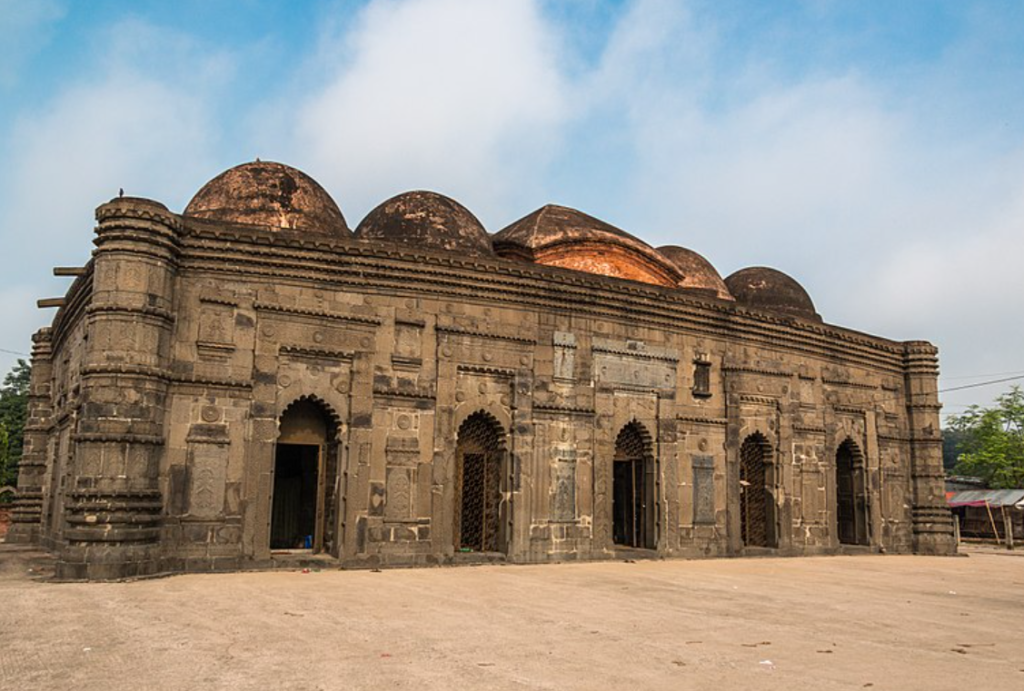
Location: Gaur, Bangladesh
Built By: Wali Mahmud during the reign of Sultan Hussain Shah
Construction Period: 1493–1519
Significance:
The Small Golden Mosque (Chhoto Shona Masjid) is located in Gaur. Built during Sultan Hussain Shah’s reign, it is distinguished by its compact size and once-gilded domes, though much of the gold has faded with time.
The mosque features intricate terracotta art with floral and geometric designs, reflecting the skilled craftsmanship of medieval Bengal. Inside, a simple yet elegant prayer hall and an arched eastern gateway invite visitors to experience the opulence and artistry of ancient Bengal.
4. Kusumba Mosque (Naogaon)
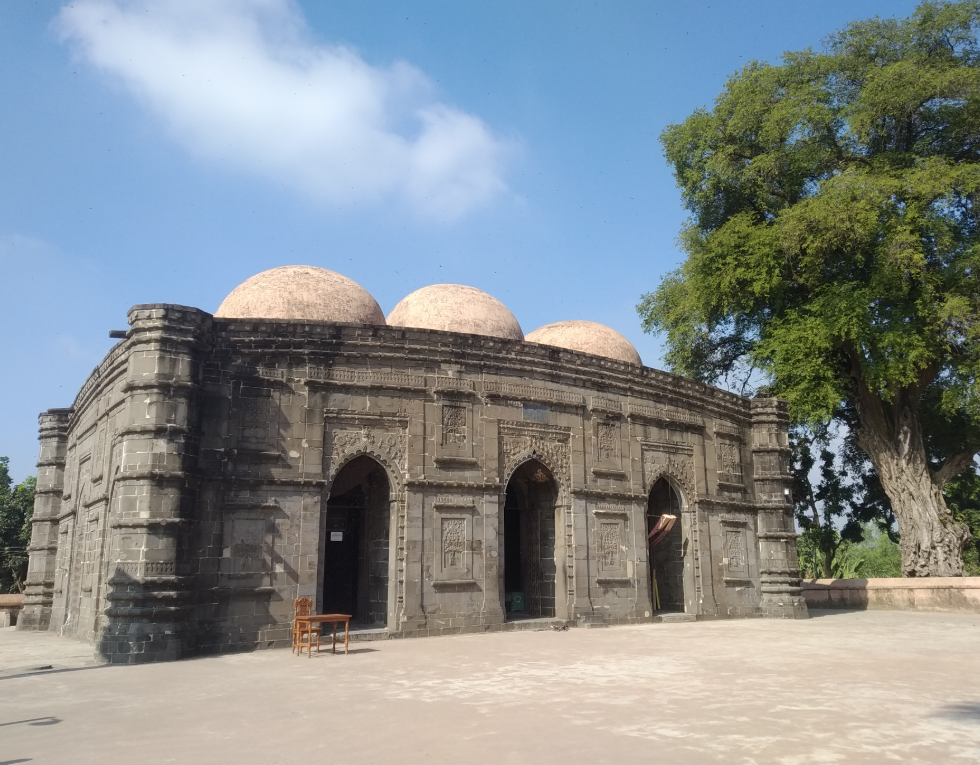
Location: Naogaon, Bangladesh
Built By: Sultan Ghyasuddin Bahadur Shah I
Construction Year: 1558
Significance:
The Kusumba Mosque, located in Naogaon, is a stunning example of medieval Islamic architecture. Built in 1558 during Sultan Ghiyasuddin Bahadur Shah I’s reign, it features a rectangular structure with six domes, constructed from black basalt stones transported from Bihar.
The mosque’s interior is simple yet elegant, with terracotta decorations depicting floral and arabesque patterns. A private prayer room for the Sultan adds a unique historical element. As one of the few remaining mosques of its kind, Kusumba Mosque offers a window into the architectural heritage of medieval Bengal.
5. Darasbari Mosque (Chapai Nawabganj)

Location: Chapai Nawabganj, Bangladesh
Built By: Sultan Yusuf Shah during the Ilyas Shahi period
Construction Year: 1470
Significance:
The Darasbari Mosque was built in 1470 during the Ilyas Shahi period by Sultan Yusuf Shah. It is known for its simple yet graceful design and its intricate terracotta artwork.
The mosque features a prayer hall with a seven-arched entrance. Although many domes have collapsed over time, the remaining structure reveals the elegance and craftsmanship of the era. Terracotta carvings of floral and geometric patterns adorn the mosque, creating a calm and contemplative space for visitors.
6. Sura Mosque (Dinajpur)
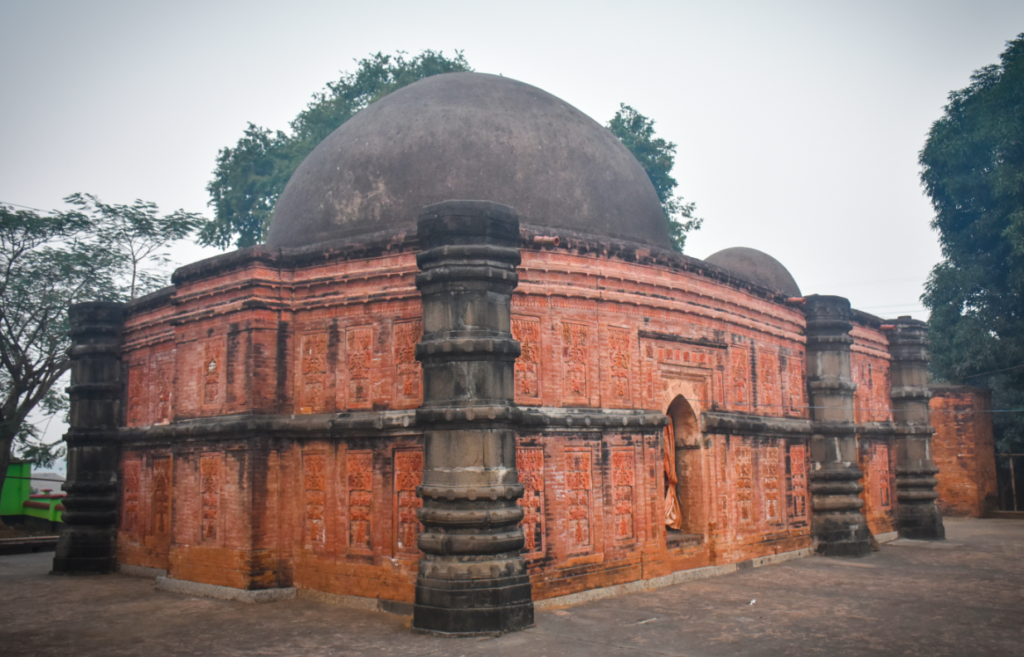
Location: Dinajpur, Bangladesh
Era: Sultanate period
Significance:
The Sura Mosque in Dinajpur is a striking example of Sultanate architecture from the 15th century. It is known for its high-quality brickwork and octagonal turrets at each corner.
Inside, a spacious prayer hall features intricate terracotta art with floral motifs and geometric patterns. The mosque’s design, though simple, feels grand and dignified. It stands today as a connection to the rich artistic and architectural traditions of medieval Bengal.
7. Rajbibi Mosque (Jessore)
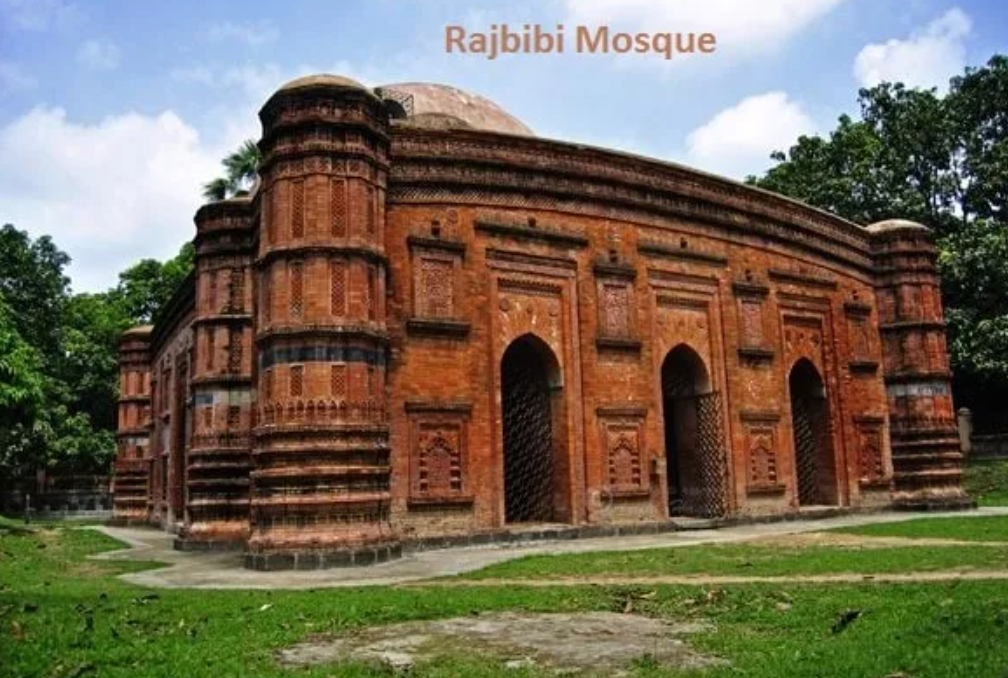
Location: Jessore, Bangladesh
Era: 15th century
Significance:
The Rajbibi Mosque, located in Jessore, Bangladesh, is a historical mosque built during the 15th century. It is named after a woman, likely a royal patron, who was influential during its time. The mosque features a single domed square structure made from black basalt bricks, which is a hallmark of the architecture from that period. The interior is adorned with terracotta art, including inscriptions from the Quran and floral designs that reflect the artistic traditions of medieval Bengal. The mosque’s simple yet elegant design creates a serene atmosphere, perfect for prayer and contemplation.
Inside, the mosque’s walls and pillars are decorated with terracotta motifs, and the prayer chamber has inscriptions from the Quran, highlighting the spiritual and cultural significance of the site. The Rajbibi Mosque stands as a testament to the architectural achievements and religious devotion of the time, connecting visitors with the historical and cultural heritage of Bangladesh.
8. Goaldi Mosque (Sonargaon)
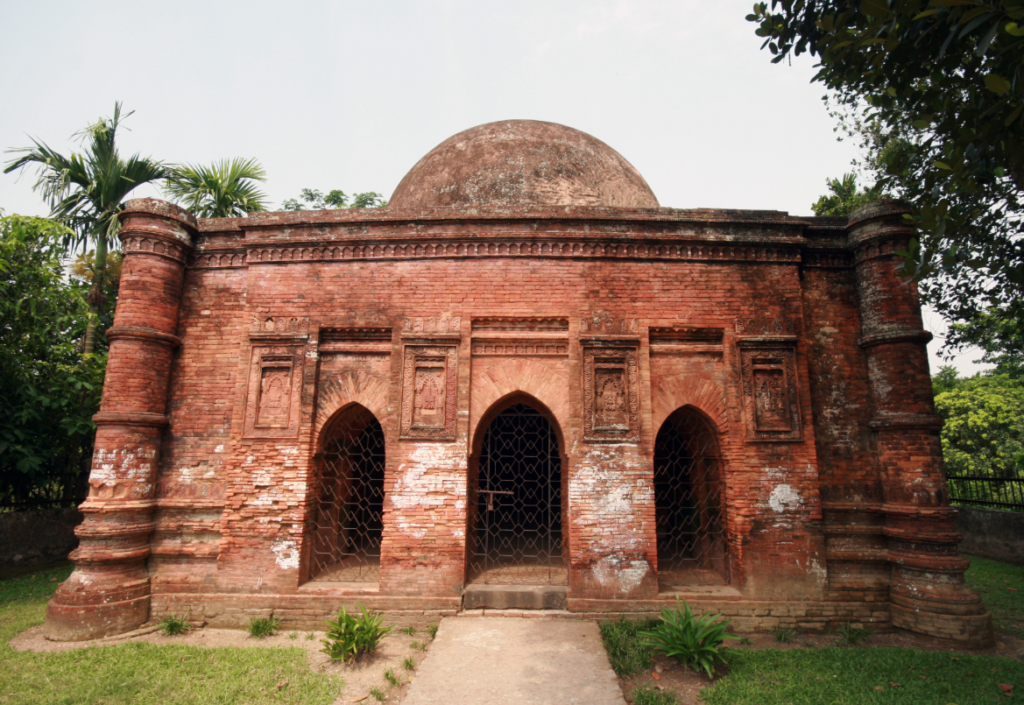
Location: Sonargaon, Bangladesh
Built By: Hizabar Akbar Khan during the reign of Sultan Hussain Shah
Construction Year: 1519
Significance:
The Goaldi Mosque, located in Sonargaon, Bangladesh, is an exquisite example of medieval Bengali architecture. Built in 1519 during the reign of Sultan Hussain Shah, the mosque is adorned with beautiful terracotta decorations featuring floral arabesque reliefs and geometric patterns. Its design is simple yet elegant, with a rectangular shape and five domes covering the roof. The mosque’s exterior and interior walls are richly decorated with terracotta panels that depict scenes from daily life and Islamic motifs, reflecting the skilled craftsmanship of the time.
Inside, the mosque’s spacious prayer hall provides a tranquil space for worship, with a serene ambiance enhanced by the intricate terracotta carvings. The Goaldi Mosque is an important historical site that showcases the artistic and architectural heritage of medieval Bengal, providing a glimpse into the region’s rich cultural past.
9. Chunakhla Mosque (Bagerhat)

Location: Bagerhat, Bangladesh
Era: Unknown; believed to be medieval period
Significance:
The Chunakhla Mosque, located in Bagerhat, Bangladesh, is a lesser-known yet significant historical mosque. It features typical architectural elements of the Sultanate period, with a simple and functional design. The mosque is characterized by its modest structure, surrounded by agricultural fields in a rural village setting. The walls are made of brick, with terracotta decorations including floral motifs and geometric patterns. The mosque’s interior is small but inviting, providing a quiet place for prayer and reflection.
Inside, the mosque maintains an intimate atmosphere, with a prayer chamber that reflects the traditional Bengali style of architecture. The Chunakhla Mosque represents the rural mosque tradition in Bangladesh, offering a glimpse into the architectural practices and everyday life during the Sultanate period. It is an important site for those interested in exploring the historical and cultural heritage of the region.
To Conclude
The historical mosques of Bangladesh stand as timeless testaments to the country’s rich cultural and architectural heritage. Each mosque, from the majestic Sixty-Dome Mosque to the serene Chunakhla Mosque, carries stories of devotion, artistry, and the spirit of a bygone era. These structures not only showcase the incredible craftsmanship of medieval Bengal but also connect us to our shared history and traditions.
Visiting these mosques is more than just exploring architectural wonders; it’s a journey into the heart of Bangladesh’s cultural identity. Whether you’re a history enthusiast, an architecture admirer, or simply seeking a tranquil retreat, these mosques offer a unique and enriching experience. Let’s cherish and preserve these priceless treasures, as they represent the pride and spirit of our nation. Happy exploring!

